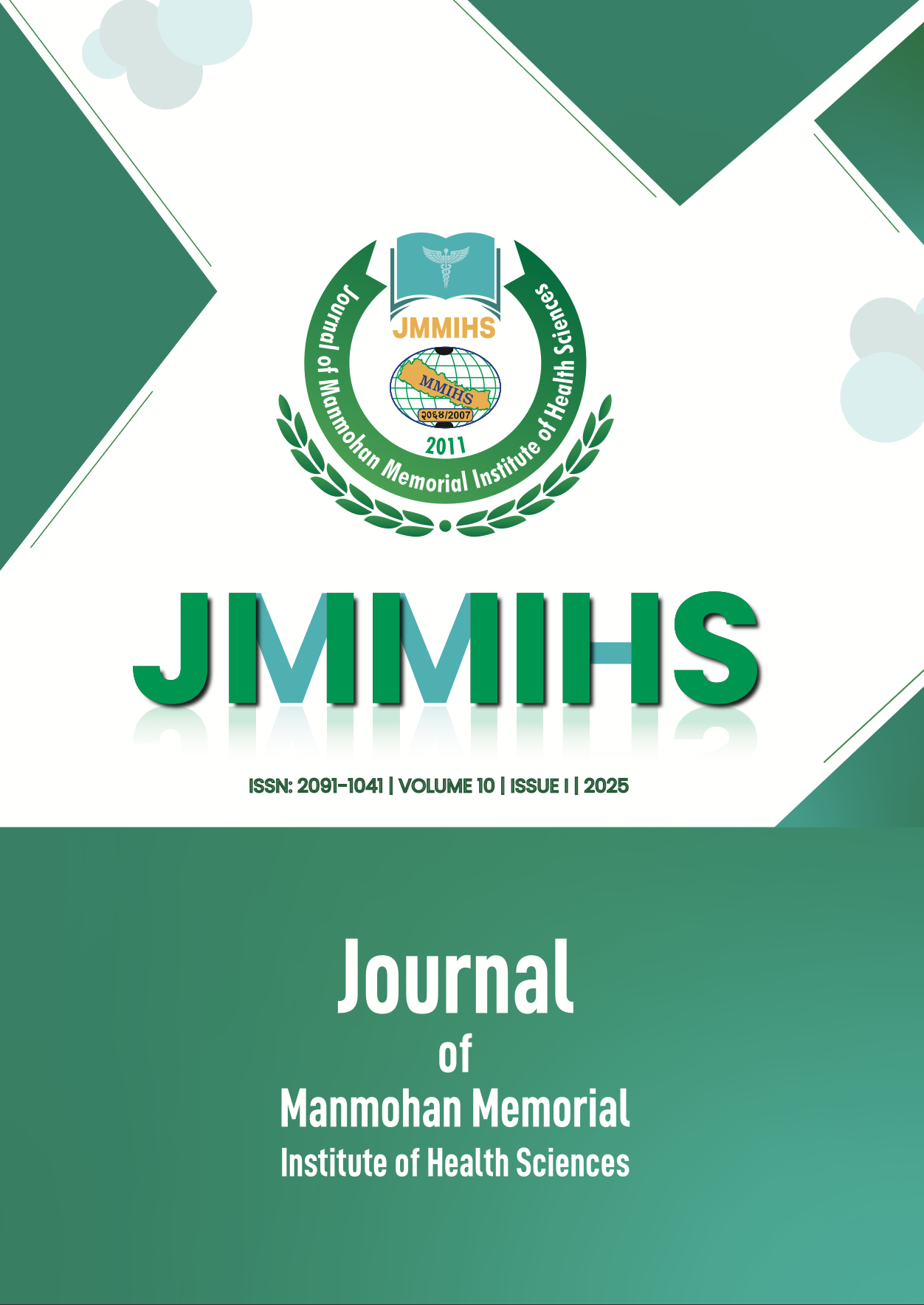Established in 2007 and hosted by Ubiquity.
Managed by Tribhuvan University Central Library.
Nepal Journals Online (NepJOL) is a service to provide online publication of Nepalese journals. For more information about NepJOL and how to join the service, see the About page.

Official peer-reviewed journal of Manmohan Memorial Institute of Health Sciences, under NEHCO-Nepal.
Submit your manuscripts at ec.jmmihs@gmail.com
Free full text articles are available

